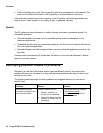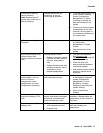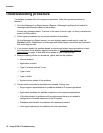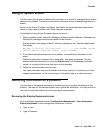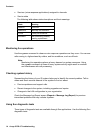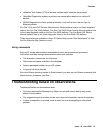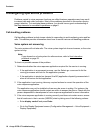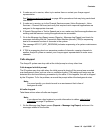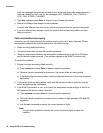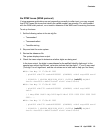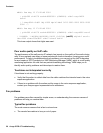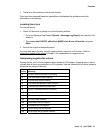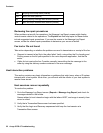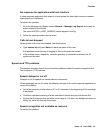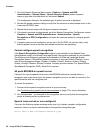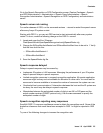Contents
18 Avaya IR R2.0 Troubleshooting
Look for messages that occurred just before and at the time when calls began dropping. If
calls are handled by VoIP, look for the messages VOIP_DISABLED_CALL_PROC or
VOIP_CALL_FORCE_CLEARED.
2. Type who -rpb and press Enter to display a log of system processes.
3. Search for different time stamps on the processes.
A recent date different from most of the others may indicate that the process respawned.
4. If you find different time stamps, record the situation that caused the problem and take
steps to correct it.
Calls not transferred properly
A transfer may fail simply because the number receiving the call is busy. However, if there
are repeated problems with transfer operations, the cause may be:
• Digits are being dialed incorrectly.
• The switch does does not support transfer operations.
• There are mismatches between the anticipated number of digits in an ANI or DID pass
and the actual number received. (This situation applies to the R2MFC protocol only.)
To resolve the problem:
1. Ensure that digits are being dialed correctly:
a) Type sysmon and press Enter to observe system operations.
b) Observe transfer operations to determine if the correct digits are being dialed.
c) If the wrong digits are being dialed, make the required correction in the voice response
application.
2. If the correct digits are being dialed, verify that the transfer number is valid and that the
switch supports transfer operations.
3. If the R2MFC protocol is in use, try to match the anticipated number of digits in an ANI or
DID pass and the actual number received:
a) Type sysmon and press Enter to observe system operations.
b) Observe transfer operations to determine the number of digits passed in ANI and DID
operations.
c) Use the nms command to specify the correct number of digits.
Note:
It might not be possible to specify the correct number of digits for each call
instance.



